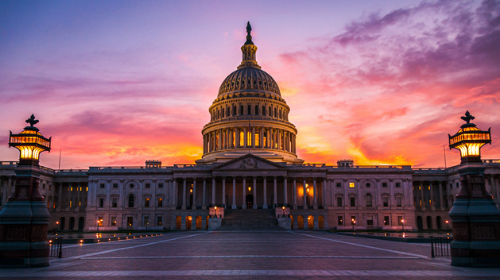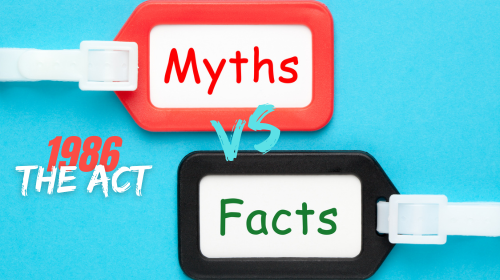
During its two-decade history, two out of three individuals applying for federal vaccine injury compensation have been turned away empty-handed even though to date $1.8B has been awarded to more than 2,200 plaintiff's out of some 12,000 who have applied. Today, nearly 5,000 vaccine injury claims are sitting in limbo because they represent children, who suffered brain and immune system dysfunction after vaccination but have been diagnosed with regressive autism, which is not recognized by the program as a compensable event. There is $2.7B sitting in the Trust Fund which could have been awarded to vaccine victims.
At the time of the law's creation in 1986, Congress said they were committed to setting up a fair, expedited, non-adversarial, less traumatic, less expensive no-fault compensation mechanism alternative to civil litigation. But Congress also acknowledged that any legislation providing liability protection must also be equally committed to preventing vaccine harm. The Act contains strong safety provisions, including first-time mandates for doctors to record and report serious health problems, hospitalizations, injuries and deaths after vaccination and give parents written benefit and risk information before a child is vaccinated.
But few of the safety provisions have been enforced and, as I testified in Congress in 1999 and again at the Nov. 18 ACCV meeting, there has been a betrayal of the promise that was made to parents about how the compensation program would be implemented. Obtaining compensation has become a highly adversarial, time-consuming, traumatic and expensive process for families of vaccine injured children and far too many vaccine victims have been denied compensation while vaccine makers and doctors have enjoyed liability protection and dozens of doses of nine new vaccines have been added to the childhood vaccine schedule.
I pointed out that federal court judges are beginning to look back at the legislative history of the Act, which so clearly affirms the intent of Congress when creating it. In recent court decisions, judges have agreed with parents and their attorneys that the compensation program has become far too difficult for plaintiffs. A recent state Supreme Court ruling also reiterated that Congress never intended to shield vaccine manufacturers from ALL liability for vaccine injuries and deaths when it could be demonstrated that a safer product could have been marketed.
In a Supreme Court of Georgia ruling on October 6, 2008 in American Home Products v. Ferrari, the justices unanimously held that the National Childhood Vaccine Injury Act does not give a vaccine manufacturer blanket immunity from vaccine injury lawsuits if it can be proven that the company could have made a safer vaccine. Georgia Supreme Court Justice George Carley wrote that the 1986 law and "the congressional intent behind it shows that the Vaccine Act does not pre-empt all design defect claims." He added that Congress did not "use language which indicates that use of the compensation system is mandatory" but only "an appealing alternative" to the courts.
Justice Carley wrote that there is no evidence that "FDA approval alone renders a vaccine unavoidably safe" and said "We hesitate to hold that a manufacturer is excused from making changes it knows will improve its product merely because an older, more dangerous version received FDA approval," adding that to do so would have "the perverse effect" of granting complete immunity from liability to an entire industry and he concluded that "in the absence of any clear and manifest congressional purpose to achieve that result, we must reject such a far-reaching interpretation."
During the ACCV meeting, longtime plaintiff's attorney Sherry Drew gave a moving description of the suffering that families with vaccine injured children endure and, during public comment at the end of the meeting, Jim Moody, of SafeMinds, and Vicky Debold, RN, PhD joined me in urging the Committee to recommend to the new Secretary of DHHS that more vaccine injured children be compensated. This was echoed by outgoing parent ACCV member Tawny Buck, of Alaska, who has a DPT vaccine injured daughter and new ACCV parent member Sarah Hoiberg, of Florida, who has a five-year old DTaP vaccine injured daughter.
In the 1986 Vaccine Injury Act, the Institute of Medicine was directed to review the medical literature for scientific evidence that vaccines can cause injury and death, which resulted in landmark reports to Congress in 1991 and 1994 providing that evidence. IOM announced at the ACCV meeting that it has recently been contracted by the Health Resources & Services Administration (HRSA) to assemble a Committee of scientific experts to review of the medical literature for evidence regarding the biological mechanisms for injury and death in association with varicella zoster (chicken pox), hepatitis B, meningococcal and HPV vaccine. There will be several public workshops during the Committee's two- year study.
NVIC has been calling for basic science research into the biological mechanisms of vaccine injury and death for more than two decades. Without understanding how and why vaccines can cause brain and immune system dysfunction, there will be no way to develop pathological profiles to help scientifically confirm whether or not an individual has been injured or died from vaccination.
The truth about vaccine risks lies in the science, properly designed and conducted. The upcoming IOM review may be hampered by a lack of biological mechanism studies published in the medical literature but the review is also an opportunity to point the way to fill in those gaps in knowledge and the need for additional research that could become part of a national vaccine safety research agenda.
In the absence of scientific certainty, all children who regress into poor health after vaccination should be given a fair hearing in the federal vaccine injury compensation program and generously compensated when no other plausible cause can be found for what happened to them after vaccination. Congress intended the vaccine injury compensation program to be non-adversarial, fair, generous and humane. If it cannot function the way it was intended to function, then parents have every right to call for its repeal and a return to unrestricted lawsuits.
Click here to read my entire ACCV statement with live links to the 1986 Vaccine Injury Act, U.S. Court of Appeals decisions, congressional testimony and other original sources.
Click here for ACCV meeting minutes and dates for upcoming meetings, which can be accessed via tele-conference call by the public who cannot attend the Rockville, Maryland meetings in person.




.png?width=991&height=280&ext=.png)



Leave a comment
Your email address will not be published. Required fields are marked with an *